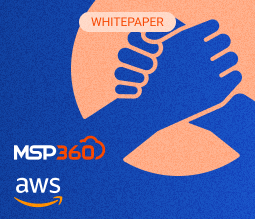Amazon Web Services allows its users to build complex interconnected applications in the cloud. To do that, you can use the virtual machines of Amazon EC2 or the expandable storage of Amazon S3. This article explains in detail what each of the given services does, the difference between them, how you can use Amazon EC2 and Amazon S3 together, and what additional AWS services (such as EFS and EBS) you might wish to use combined with EC2 and S3.
What Is Amazon EC2?
Amazon EC2 (short for Amazon Elastic Cloud Compute) is a service for running servers in the cloud. When Amazon Web Services introduced EC2 in 2006, this type of service made a big difference as it allowed companies to quickly and easily deploy servers in the cloud, instead of buying, configuring, and maintaining their own servers locally.
Most Amazon EC2 server instances are virtual machines hosted on Amazon Web Services infrastructure, although AWS now also offers bare-metal EC2 instances. (Bare-metal cloud instances allow users to host a workload directly on a physical server, instead of a virtual machine. The server is managed by the cloud provider, so users do not have to set up or maintain the hardware.)
A wide variety of EC2 instances are available at different price points; in general, the more computing power you want, the higher the cost of the required EC2 instance. Certain Amazon EC2 instances are designed for specific uses, such as GPU parallel processing for big data workloads.
In addition to the quick and easy configuration of your server, Amazon EC2 offers features such as autoscaling, which (among other benefits) automates the process of increasing or decreasing the compute resources that are available to a given workload. In this way, autoscaling helps to optimize costs and performance, especially for workloads that fluctuate widely.
What Is Amazon S3?
Amazon S3 (or Amazon Simple Storage Service) provides a cloud storage infrastructure where users can store unstructured data and manage their workloads via AWS-supported interfaces, like Web interface, AWS Command Line Interface, and AWS API. To get started with S3, users need to create a “bucket” - the endpoint resource where all uploaded data will virtually exist. (By virtually here we mean, that physically your data will be stored at different decentralized nodes or even data-centers across various geographical areas).
Amazon S3 is an object storage that was designed for storing data of any size, of non-standard format, or highly dynamic. (To learn more about the benefits of object storage, especially in the context of cloud computing, check out our article on cloud object storage.)
Amazon S3 is not the only storage service available on AWS. There are also Amazon Elastic Block Storage (EBS) and Elastic File System (EFS) that are designed especially for Amazon EC2. Compare Amazon S3, EBS and EFS to learn more.


Amazon S3 vs. EC2: What’s Similar, What’s Different?
Amazon EC2 serves as an instance to access cloud-based servers, while Amazon S3 is used for storing data. However, you might need both of them for your operations.
If you use one, there is a good chance you will use the other. That is particularly true for:
- Amazon EC2 is a popular solution for running various applications in the cloud. However, these applications might need some static data to operate with. For those use cases, Amazon S3 offers an easy and highly scalable storage for any static data, such as data for website hosting, for example.
- You can set up Amazon S3 buckets as a backup destination for Amazon EC2 data.
- Amazon S3 buckets might be used to exchange data between EC2 instances or between the cloud and local infrastructure.
On the other hand, EC2 and S3 don’t go hand-in-hand in all situations. Amazon S3 is not ideal for storing highly dynamic website data, such as server-side session data. Besides, S3 buckets backups are supposed to transfer only data stored in these buckets, that's why you need to consider additional backup approaches to back up data stored in the EC2 instance, for example. For an overview of EC2 backup strategies, see this article:
Further reading How to Back Up Amazon EC2 Instances
Conclusion
Discover an article highlighting a comparison: Exchange Online vs. Exchange On-Premises, immutable backups, what is RMM, how to resize partitions in Linux, how to retrieve Amazon Access Key ID and AWS Secret Access Key, an overview of SQL server backup types, cost-effective backup solutions and what is backup software, before this conclusion.







